
For at least forty years, the neighborhoods bordering the university have been home to dozens of iterations of ugly boxlike student housing. These buildings appear to have been built with little or no design oversight and were inserted into what had been residential neighborhoods. Any newcomer to the city today would agree that they are a visual blot on the surrounding residential zones.
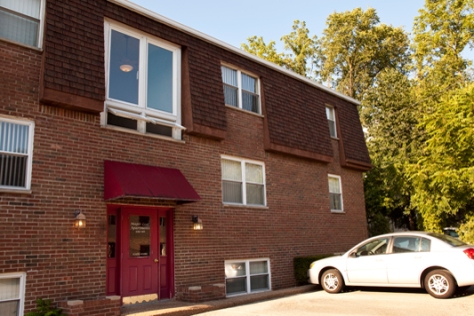
You can actually date them by their ugliness, after a fashion: the first-generation rectangular plain boxes with balconies were built earlier in the 1960s, while the faux mansards came somewhat later. But all of them appear to have been built by the early 1970s, at which point the neighborhoods of Elm Heights, Cottage Grove, and East Second, Dunn and Grant (just south of Third) had all been marred beyond recognition.
What were our planners thinking? Was there even city planning back in the 1960s and ’70s? Did anyone protest at the time as their neighborhoods were being uglified? It’s not as though high-rise apartments benefit the overall tone of a residential district, and parking has always been an issue. It’s pointless to argue with the fact that they exist, but when my daydreams turn to what I would do if I were a billionaire, I know at once what I would do. I would buy up every box apartment in order to demolish them and construct new-tech but retro-look foursquares, bungalows and cottages that would restore those neighborhoods to their original look.
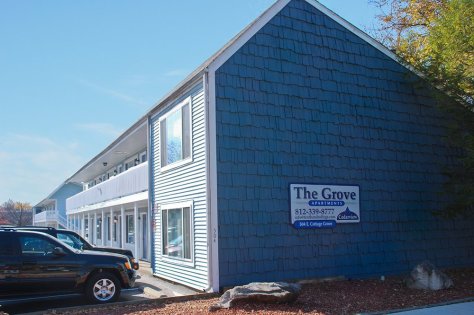
Apparently our community has learned nothing from the repeated mistakes of the past, because our city planners have repeatedly approved poorly conceived high-rises throughout our downtown core.
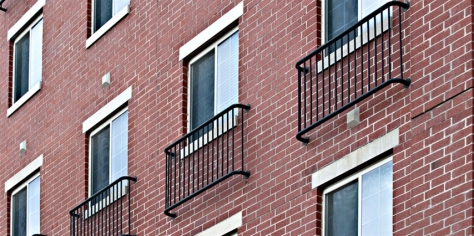
Although Bloomington does have design guidelines, the city planners have granted so many exceptions in the past decade that it basically amounts to spot-zoning….which was what the design guidelines were originally put in place to avoid.
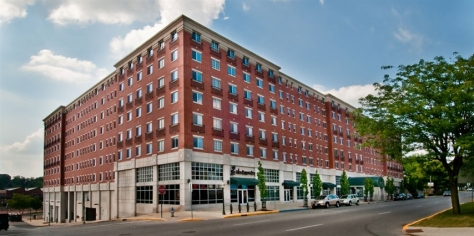
Don’t get me wrong; I think compact urban form is a good thing in general if it follows New Urbanism principles and involves visually attractive units that have diverse and sustainable populations living inside them. But why did the city fathers in their wisdom believe that any multi-story monolithic structure automatically qualified as New Urbanism? Why did they think it would be constructive and healthy to create a monoculture of young, randy, drunken people concentrated in the city’s core? Good oversight and good planning would have required developers to set aside a proper percentage of each building for families, professionals and/or retirees. Each development also ought to have contained a number of affordable units for the poor.
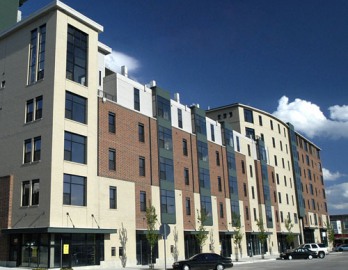
These towering apartments in the city’s core have created many ripple effects, one of which is the ongoing parking problem. Certain city council members cherished the misguided hope that if apartments were constructed without adequate attached parking, it would encourage students to use bicycles instead. But since the majority of the 2000-plus renters already owned vehicles, and because all of their visiting friends and lovers also drive cars, this was a myopic approach to reality. The shortage of parking led the city to bring back parking meters, which in turn severely impacted downtown businesses. Has anyone else out there heard the rumors of the official parking survey whose findings were so anti-meter that the city suppressed the news?
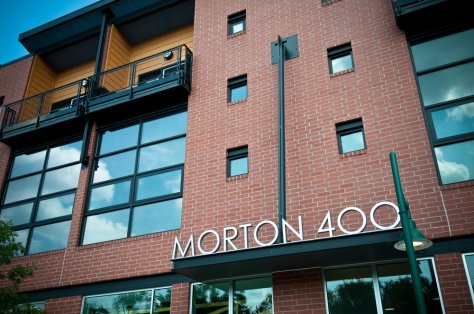
It’s not just parking that has impacted the business environment downtown. Boutiques and shops that appealed to non-student clienteles went out of business. In their place many new bars have opened up, which is why puddles of barf on the sidewalks are a daily sight. The downtown core’s entire feel is completely different than it was a decade ago.
A planning choice is more than a drawing and a presentation. A decision must not be limited to the single block where the development will be built, but should take into consideration every possible long-term repercussion to the community at large. It should affirmatively answer the question “is this building going to be good for our community for years to come?”
Because the vast majority of the apartment buildings downtown are ugly and detrimental to the quality of life, it’s clear that the current batch of city planners have not done a good job . Now that we will have a new mayor this fall, think carefully about how your vote will determine Bloomington’s future. Will your candidate continue on the current path, or will he replace the planners and make an attempt to correct the damage? Time will tell.
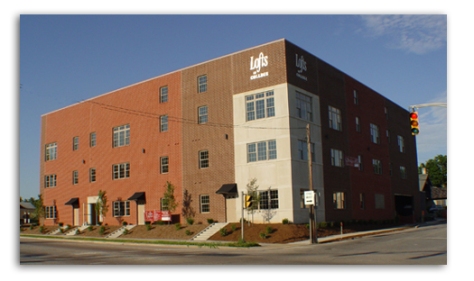

Oh, god, yes! You have written my exact sentiments. It is almost enough to make one want to leave Bloomington!
Love to you!
Veda
LikeLike
I’ve wanted to write about this topic for over a year. It took a snowy day to sit down and actually accomplish my goal. Thank you for reading and commenting, Veda! 🙂
LikeLike
Thank you for that well articulated critical analysis of this local problem. I’ll look forward to opportunities to address this issue in public as they arise.
LikeLike
Thank you for reading and commenting, John! 🙂
LikeLike
Well written. There is one additional issue with these buildings. The blocking of sunlight on narrow streets where some of these buildings are. I grew up in Chicago in the 1950’s. Lived on a little street named Magnolia that ran north and south. Neighborhood consisted of 2 and 3 story walk-ups. On a very narrow street. We got very little direct sunlight. Even though it was only about 3 or 4 blocks for Lake Michigan it seemed most dark and foreboding. One of the owners of a property gave up trying to grow grass and just had his entire yard covered in concrete..
LikeLike
I intended to write about the issue of shadow in the blog but hit the “post” button before I remembered. Each time I drive past Farmer House and the Bakehouse, old structures now permanently in the shadow of high-rises that block the sun, I wonder how the old materials will hold up under the dampness and lack of sunshine. Thanks for commenting, Jim!
LikeLike
Where do I begin? You nailed it Carol! It seemed to me that for some time, any proposal that hinted of “retail below, ‘luxury’ apartments above” got the rubber stamp if approval and construction began immediately (and was completed in a few months). I take issue though with your criticism of the individual planners – they’re (in my experience) good people that have a rule book they’re required to follow. I had a positive experience remodeling a house where my planner, Eric Greulich, told me what specific issues we needed to work through to turn a dumpy little house into something unique that augments the area instead of uglified it.
The criticism should be reserved for the top layer of local government where policies are handed down.
LikeLike
Yes, the planning department can be very helpful when it comes to rehabbing individual homes. They seem to lose their focus when it comes to large-scale developments. Have you seen the plans in the newspaper for the 70-foot-high behemoth that’s going to be built on Kirkwood, katy-corner across from the library? Wow. Words fail me.
thanks for reading and commenting, Daniel!
LikeLike
Good article & yes you nailed it. One of the newest & worst is the apartment building on S. Henderson St. in the block where the Elm Heights Bloomingfoods is, that block was a good example of the old Bloomington, with a little green space, now it has a very ugly apartment building filling up the back yards.
LikeLike
You’re right, it tries to look 1920s but the proportions are simply awful.
LikeLike
You have nailed it. These are my thoughts exactly, each new high rise is uglier than the last. The planners have sold us out to the highest bidder. Perhaps we should also have a look at the influence of the Chamber of Commerce, that is to say, the bottom line. This city has lost its unique charm, its authenticity.
Thank you for writing this!
Betsy
LikeLike
Thanks for commenting, Eliza. The bad planning decisions over the past few years have led a lot of people to believe that there is a pro-development bias on the part of city planners. If true, the people with bias need to be removed. I suppose it’s possible that there is no bias, only bad decision-making, but in that case too they ought to be removed!
LikeLike
Amen. Thank you. Thank you for making this statement. Can’t tell you how many times I’ve ranted and started writing in my head the list of grievances i.e. brick box blights. Just about every time I drive past The Lofts, I get mad and sad all over again.
LikeLike
What were they thinking when they approved The Lofts?!? Unbelievable.
Thanks for reading and commenting, Alexandra! 🙂
LikeLike
Right on. And what’s worse about all these ugly buildings going up now, is that people DO protest-for valid reasons, but it’s futile. When the developers of the High Point property wanted to tear down the really cool brick bungalow (at Cottage Grove and Walnut) to make more parking space for their proposed student high rise, every single one of my neighbors came out to say how much this was going to negatively impact our lives, and the character of neighborhood. (You were probably even on the committee that put together the presentation documenting the historic value of this home). It was exhausting! We were the bad guys. It’s so much work to keep these ugly, not-fitting-into the-neighborhood, megabuildings out. It is certainly an argument for a pause in construction so we can all stop and give input about the direction we want development to go–and not have to fight development on a base by base case.
~Rebecca
LikeLike
You’re right, just as bad as spot-zoning is spot-development, especially in or next to neighborhoods that will suffer an adverse impact as a result. —Thanks for reading and commenting, Rebecca!
LikeLike
I would be interested to know what developments people would consider to be well done. It’s easy to to negatively critique, but constitutes a well executed multi-family development?
LikeLike
I’d say that a good multi-unit development would be one that’s genuinely attractive to the eye; would not harm or impair the existing tone of the surrounding neighborhood or district; would not increase problems due to parking, trash, noise, etc.; and would make people think better of the city as a result of the building being there. As someone commented on Facebook, when people from out of town visit Bloomington’s city core, they often express disapproval of the high-rises. In other states, picturesque towns that depend on their looks and charm for tourism and property values generally have very strict zoning laws. Unsurprisingly, people want to see, visit and live in attractive towns, not ugly ones.
—Carrol
LikeLike
Sure, I agree with you but have there been any developments over the past 10 years that fit the “attractive” category.
LikeLike
Personally, I rather like 400 Morton, even though I don’t know if my judgment will stand. I like that it’s not so tall that it overpowers the street it’s on. And I like the fact that it’s modernist architecture in contrast to the nearby high-rises which are not modernist so much as institutional. The original brick-and-limestone high-rise built on West Kirkwood by CFC is a bit overly ornate, but it’s nevertheless better than Smallwood and The Lofts because it tips the hat to architectural forms that can be found elsewhere in Bloomington. Even the high-rise at the corner of Dunn and Third is acceptable (barely), although it would have been better if it was not so high.
LikeLike
Somewhat related: In my opinion, Bloomington is going a bit overboard with all the new “housing” developments. Whether it be apartments, condos or hotels it’s getting a bit crazy. I didn’t know we had enough people to bring this kind of demand for housing.
LikeLike
It’s not ordinary people so much as students. IU increased its student body from 30,000 to 40,000 over the past decade or two; has built very few new dorms and apartments and has been repurposing old dorms for offices. That’s why there are so many new student apartments. But although students now have a wide choice of rental options, there are as a consequence fewer and fewer housing options for ordinary people, families and the poor. Bloomington doesn’t particularly need any more student housing; what it DOES need, in spades, is affordable housing that’s located within the city, not out in the county.
Thanks for commenting, Nick. —Carrol
LikeLike
While I’m hesitant to agree with all of your reasoning or choices, I appreciate that other people are giving some of these constructions a double-glance. I definitely agree that several of the building decisions over the last several years (can’t speak for further than a decade) seem… strange.
The Dillon (or whatever it’s called) out off Patterson is of particular note to me, since I pass it every day for work, though it is a little outside of the scope of your article.
Now I don’t have enough information about the complex (and the others that have been constructed), but it strikes me that several neighborhoods (particularly the aging southside ones, though I notice those more since I live there) can’t seem to fill the homes and apartments (as well as trouble moving the properties on the sale market) that are there already, despite being a fairly decent location for most needs. Then something like the Dillon goes up.
I’m not in a position to have all the data, but it certainly looks weird. I know some of it is on the property owners and leasing companies having trouble and/or being unwilling to compete for some of the marketshare, but…. oh, I don’t know. Maybe it would make more sense through the lens of a middle or upper-middle class income.
Enough rambling. Thanks for the article!
LikeLike
That horrible development along Patterson deserves a whole blog of its own. Why was it ever approved??? It was built over the objections of the nearest neighborhood, Prospect Hill, apparently for the sole reason of simply filling vacant space. There are many worse things than letting a property sit vacant while waiting for a better project to be offered. Patterson is a prime example of a bad development: it’s monumentally ugly; it was built without any sense of its inhabitants being part of a surrounding community; it squats on top of a former brownfield that was not necessarily remediated properly; and it detracts from the neighboring district of Prospect Hill. It is a blister, a boil, upon the Near West Side of Bloomington and its presence makes the city shabbier as a result.
LikeLike
In the UK, few planners get planning permission without including either a public amenity, social housing (around 20%) with affordable rents, and decent aesthetics which compliment the neighbourhood. I wish it was the same in Bloomington. Great article Carol.
LikeLike
Brits are brilliant! Yes, this is the ticket: affordable rents and aesthetics. Is that really too much to ask?
Thanks very much for reading and commenting!
Carrol
LikeLike
Great article. Thanks for your thoughts. I’ve heard that it’s the exact opposite reason that we have all the ugliness. It’s because we have so many regulations and design criteria which includes a one year waiting period if original designs are not approved so developers submit crap, that fits all the regulations, so they don’t have millions of dollars tied up waiting for approval. John Fernandez, past Bloomington mayor, expressed this fact when he spoke on a panel about economic development. Developers would love to submit more eclectic designs, that fit Bloomington, but don’t because of fear of not being approved on the first submission and not willing to wait a year to submit again.
LikeLike
Thanks for commenting, Patrick. If what you say is indeed the case, then the reason we have so many disappointing projects might conceivably be that the planners approve too many initial plans because they’re hesitant to slow down the process by ordering a necessary fix. I’m in the process of learning how the process works, and when I learn more I will post it on my blog. —Did you happen to see the previous comment about the English approach to planning?
all best, Carrol
LikeLike
This is where the supposed Democratic governing body of Bloomington has totally gone the route of Republican but won’t admit it becuase they would lose their seat. They worry more about the money but won’t put that to the public. They’ll never admit it because it would ruin all of the Federal grants they get for the ridiculous bullshit that costs a ton more to post on the side of a parking garage that could be used so much more effectively.
LikeLike
Not actually sure this is true, Mattabdon, because grants for civic art are not tied in any way to whether Dems or Republicans control the city council. It does appear that the city council is progressive whereas the planners are regressive. We need to have vision, clarity and focus in both of these branches of our local government, and the mayor needs to take a leadership role instead of standing back.
LikeLike
Carroll — I sure hope you win the lottery!
LikeLike
Thanks, Steve! 😉
LikeLike
preach!
LikeLike
🙂
LikeLike
This is very well written, and it says pretty much everything I feel. Having lived in or near Bloomington for 34 of my 37 years, I can confidently say that the city feels less like “home” to me now than it ever has before.
LikeLike
Thanks for commenting, Joel, I feel the same way myself. I remained in Bloomington after my time at IU because I loved the charm of the courthouse square, the old brick buildings, the cottages of the Near West Side and the foursquares of Elm Heights. Today, after living here for almost 32 years, I find myself very saddened and disappointed by crucial parts of the urban geography. It’s not that change is a bad thing. Change is a necessary thing, but we need to try to make those changes beneficial instead of detrimental. 😦
LikeLike
Couple of comments. High Rise by definition is anything over 35 meters (115 ft) or 13 stories. There hasn’t been anything in Bloomington built like that in the past 30 years. The reason I point this out is that high rise developments would clearly be out of scale in Bloomington and it’s an inaccurate description of what’s really being built and therefore it’s easy to demonize something when it’s not accurately portrayed. Mid-rise developments which are actually being built but this doesn’t sound as threatening as high rise, but that’s what is actually coming out of the ground.
Another point is that the UK is really not a great comparison. While the planners have a ton of control and the quality of the product there clearly better, the UK is running very quickly into a major housing crises because of it. Rents are out of control and take up a much larger percentage of income than in the rest of Europe which is already incomparable to Bloomington. You can forget about owning a detached house because of the cost, and even an attached (semi) is prohibitive for most people. The general populations is being pushed into permanent rental housing at a much faster rate than any other time in history. Here in Germany, home ownership is at an all-time low for the same reasons. What is really now being built (and not just in London) is upper end housing because it’s the only way to get through and paying for the strict controls.
As usual it requires a balance between the public good and what’s really economically feasible. If you want better quality, the market and therefore the community better be prepared to pay for it.
It’s very easy to make comments that real estate developers are a greedy bunch and are just set out to make an evil dollar. The reality is that no one who I’ve seen comment is or has actually been in their shoes. The risk is extremely high and they have to invest an inordinate amount just to gamble that the money they are spending, in an arduous and murky planning and approval process, actually pans out. To top that off (supply vs. demand) land prices are some of the most expensive in the state.
Better aesthetics and affordable rents would of course be great, fantastic in fact. But who is going to pay for that? Is the city going to give a real estate tax deduction if limestone is used instead of brick or cementious siding? Are citizens of Bloomington going to chip into a fund for engraved limestone architectural exterior detailing that everyone is pining for? Most of the beautiful and historic limestone houses in and around Bloomington were built and paid for in an economic circumstance much different than we find ourselves in today.
Frankly, good interior design usually doesn’t cost that much more but that’s not the case for exterior design. It gets expensive quickly no matter how good the architect/developer is. So in the end, how is it going to happen because you can dictate what the building looks like and what the materials are going to be but there will be a direct result in the rents/sale prices of the units?
If Bloomington wants better development (and who doesn’t) then make the planning and approval process crystal clear, fair for everybody, with clear development and architectural guidelines, clear milestones for both the neighborhoods and the developers to meet, but most importantly a process which assures a fair and transparent step by step road map for how the process is driven. Plus, there needs to be a clear incentive for the developers to do it.
In my Indianapolis developments, there were clear unnegotiable strict architectural guidelines that every developer had to follow. It dictated everything from the size of the buildings, setback, window sizes, door treatments, to the paint color. However, if I was a developer hit all of the points, and had neighborhood feedback, there was absolutely no way for the development to be denied let alone continued in the planning/approval process. That simply not the case in Bloomington. You can literally add 10-15% or more of additional cost to the developer just to run the development through the process in Bloomington. That just doesn’t happen in many other places. This cost is going to be directly reflected (and many others) in the rent of these units.
If you want more housing for sale, than the city (citizens of Bloomington) should incentivize it but not the detriment of the for rent market. Why you ask? Because IU is going to continue to add students and if you shut the for rent pipeline, monthly rents will just soar to even loftier prices.
LikeLike
Mark, I appreciate your comments. Obviously, as a developer, you understand better than I the arcane bureaucratic process involved in proposing a development and getting it approved.
That said, something is very wrong with Bloomington’s recent development. This is attested by the fact that my blog post, which I thought would go out to a handful of friends and followers, has been shared and viewed nearly 5000 times within two days of going public. Many people have sent me emails and Facebook comments which repeat “I don’t recognize Bloomington any more. It no longer feels like a welcoming home. My visitors from out of town comment negatively on the sight of downtown. Too many developments are being built despite protests from the nearby neighborhoods.”
Something is not going right when so many people are all equally upset. It’s easy for me to sit here and criticize, but there ARE developments that I think work in terms of size, scale, looks, and occupants. Matt Press’s buildings along Dunn and Hillside are “good”, as is the development directly across the street to the south. Matt’s new structures along the B-Line trail are good. The building holding SweetGrass is good. The Landmark Avenue medical offices are easy on the eye. I rather like 400 Morton because of its well-scaled and jaunty modernist facade.
My article began by pointing out how the ugly box apartments in Elm Heights, Cottage Grove, etc., never should have been built since they detracted visually from the areas surrounding them and degraded the overall tone. Nor, in my opinion, should the hideous Lofts have been built, nor that oversized excrescence just north of Morton and 11th, or the appalling new mass of ugly units along the east side of Patterson. There’s just no excuse for these structures. They mar the appearance of our beloved city, and they will continue to do so until they are eventually torn down. No one will ever walk or drive past and look at them with approval and pride….except perhaps their developers.
My humble thoughts for what constitutes “good” development are these: The size of the structure must not overpower, as Smallwood does (it would have been basically acceptable if it had been half the length and two or three stories lower). A new building should be scaled so it does not not loom hugely above nearby structures, as the proposed hotel on Kirkwood will do. A good development will not be so close to a historic building that it casts it into permanent shadow, as poor Farmer House and the Scholars’ Inn now are. A good development will be targeted at a single (student) population, but will have a certain number of units for ordinary adult renters and for affordable housing. And a good development should mirror the predominant architectural style of buildings that currently exist. Red brick with limestone trim has been considered a good blend ever since the historic buildings around the Square were built in the 1890s.
Lastly, a development should not be built simply in order to fill vacant land. We citizens of Bloomington expect our buildings to be handsome and to make us proud of our city. We want buildings that impress out-of-towners and build tourism. This city is not simply a playground for speculators….it’s our home and we need to treat it with respect lest its unique character be destroyed forever.
LikeLike